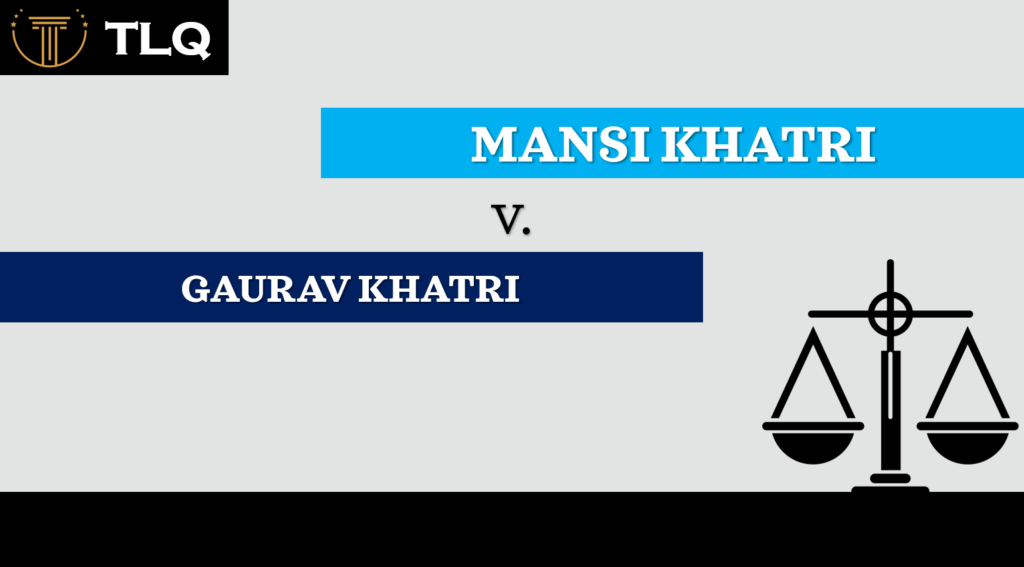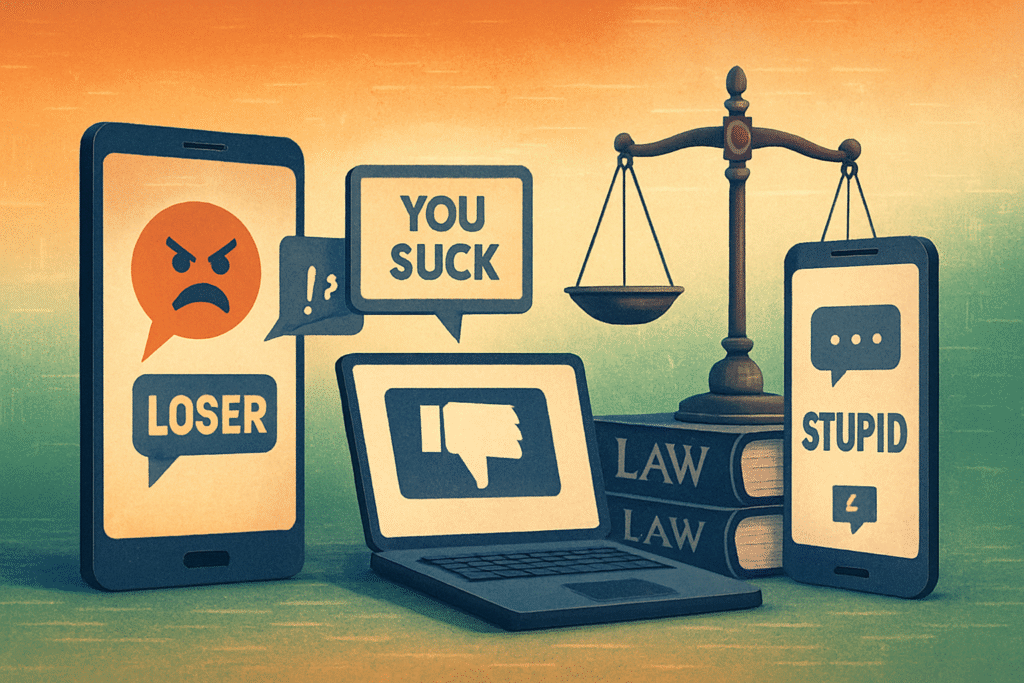Published On: 26th July,2023
IPR In the Digital Age: Preserving Creativity
ABSTRACT
Intellectual property rights (IPR) are legal privileges granted to people or organizations over works of creative imagination. These privileges are crucial for protecting and encouraging artists, innovators, and inventors to keep coming up with new works and concepts. In today’s knowledge-based economy, where concepts, expertise, and creativity are valuable resources, IPR protection and enforcement are crucial. To promote innovation and creativity and to make sure that creators and inventors are compensated for their contributions to society, governments around the world have created laws and regulations to protect and enforce IPR.
There are various kinds of intellectual property rights, each of which protects certain kinds of inventions and creations. The rapid advancements in technology and the widespread adoption of the internet have revolutionized the way information is accessed, shared, and consumed. In the digital age, intellectual property (IP) has become an integral part of the global economy, as innovative ideas, creative works, and inventions are more valuable than ever before. However, this digital transformation has also posted significant challenges to protecting and enforcing intellectual property rights. This article explores the challenges and opportunities that arise with the evolution of IP in the digital era.
INTRODUCTION
IPR stands for “Intellectual Property Rights.” It refers to a set of legal rights granted to individuals or entities for their creations or inventions that are a result of their intellectual and creative efforts. These rights are meant to safeguard and grant exclusive ownership over intangible assets, giving creators the power to regulate how their works are used and distributed and stop unauthorized use of their works.
The following are the main IPR categories:
a)Copyright: Copyright safeguards original works of authorship, including books, music, movies, artwork, computer programs, and other forms of creative expression. The copyright holder has the sole right to reproduce, distribute, perform, display, and develop derivative works based on the original work.
Copyright in India is primarily governed by The Copyright Act, of 1957: This Act provides for the protection of original literary, artistic, musical, and dramatic works, as well as computer software and cinematograph films. It governs matters such as copyright registration, infringement, and remedies. Jurisdiction for copyright infringement cases lies with the District Court or the High Court.
b)Patents: Novel, nonobvious, and useful innovations and discoveries are protected by Patents.
For a set time (often 20 years), they grant the creator the only authority to create, use, and sell the copyrighted invention before it enters the public domain.
Patents in India are primarily governed by The Patents Act, of 1970: This Act provides for the protection of inventions in India. It regulates the grant, registration, and revocation of patents. The jurisdiction for matters related to patent infringement lies with the High Court specified by the Central Government.
c)Trademarks: Trade secrets are confidential and proprietary information, such as manufacturing processes, formulas, customer lists, and marketing strategies. Unlike patents, trade secrets are protected indefinitely as long as they remain secret and provide a competitive advantage.
Trademarks in India are primarily governed by The Trade Marks Act, of 1999: This Act governs the registration and protection of trademarks in India, including service marks, collective marks, and certification marks. It provides for remedies against infringement and passing off of trademarks. Jurisdiction for trademark infringement cases lies with the District Court or the High Court.
d)Industrial Designs: Industrial designs safeguard an object’s distinctive external look, including its form, arrangement, pattern, or adornment. They grant the owner temporary exclusivity while preventing unlawful duplication of the design.
Industrial designs in India are primarily governed by The Designs Act, 2000: This Act governs the protection of industrial designs in India. It provides for the registration, infringement, and cancellation of designs. Jurisdiction for design infringement cases lies with the District Court or the High Court.
e)Geographical Indications (GI): Geographical indications are used to identify products from a certain region with special quality, a good name, or other traits exclusive to that region. GIs support rural development and preserve the reputation of local goods.
GI India is primarily governed by The Geographical Indications of Goods (Registration and Protection) Act, 1999: This Act provides for the registration and protection of geographical indications in India. It aims to protect the geographical indications related to goods in a specific territory. Jurisdiction for matters related to geographical indications lies with the District Court.
f)Plant Varieties Protection and Farmers’ Rights in India are primarily governed by The Plant Varieties Protection and Farmers’ Rights Act, 2001: This Act protects plant varieties and farmers’ rights. It establishes a system for the registration and protection of new plant varieties. Jurisdiction for matters related to plant variety protection lies with the Plant Varieties and Farmers’ Rights Authority.
Example:
- Let’s say an aspiring writer named Mahi writes a book called “Dreams Unfold.” As soon as Mahi writes and completes the book, the book automatically holds the copyright to it.
- A company called “Vinayak Printer” that manufactures medicines. The company designs a unique and visually appealing logo featuring the letters “V” and “P” creatively combined with a glowing effect. Once the logo is created and adopted as the official symbol of Vinayak Printer, the company can apply for a trademark to protect its intellectual property.
HISTORY OF IPR
It is possible to trace the origins of the idea of intellectual property rights (IPR) back to early civilizations. To stimulate creativity and advance society, it has been crucial to believe in the importance of safeguarding one’s inventions, information, and discoveries. An outline of the significant turning points in IPR history can be seen below:
- Ancient Time: Ancient civilizations like Egypt and Greece, when craftsmen and artists were given exclusive rights to manufacture and market their one-of-a-kind works. With this safeguard, talented artisans were encouraged to develop and uphold a standard of excellence in their production.
- Medieval Europe: To protect the methods and expertise of various trades, guilds and trade organizations developed laws and regulations. These customs served as the model for the earliest types of patents and trademarks, which protected particular knowledge and marks connected to certain merchants and craftsmen.
- Statute of Monopolies (1623): One of the earliest legislative milestones in modern IPR history was the English Statute of Monopolies of 1623. This statute limited the granting of exclusive rights (monopolies) to new inventions for a fixed period, preventing abuses of monopolistic power by the crown and encouraging innovation.
- The Statute of Anne (1710): This British law, also known as the Copyright Act of 1709 or the first copyright law, marked a significant development in copyright protection. It granted authors the exclusive right to reproduce and publish their works for a limited time, thereby recognizing the importance of creativity and encouraging literary and artistic endeavors.
- Paris Convention for the Protection of Industrial Property (1883): The Paris Convention was one of the first international agreements concerning industrial property protection. It established the framework for mutual recognition of patents and trademarks among member countries and promoted the idea of national treatment for foreign inventors.
- Berne Convention for the Protection of Literary and Artistic Works (1886): This international treaty focused on copyright protection for literary and artistic works. It aimed to harmonize copyright laws among participating countries and ensured that foreign authors received the same protection as domestic authors.
- United States Patent and Trademark Office (USPTO) (1802): The establishment of the USPTO in the United States formalized the patenting process and centralized the administration of patents and trademarks. It became a model for patent offices in other countries.
- World Intellectual Property Organization (WIPO) (1967): WIPO, a specialized agency of the United Nations, was established to promote and protect intellectual property globally. It administers various international treaties and works to harmonize IP laws and regulations worldwide.
- Digital Age: The advent of digital technology and the internet presented new challenges for IPR protection. The World Intellectual Property Organization Copyright Treaty (WCT) and the WIPO Performances and Phonograms Treaty (WPPT) were adopted in 1996 to address digital copyright issues and protect the rights of creators in the digital environment.
- TRIPS Agreement (1995): The World Trade Organization (WTO) is in charge of enforcing the Agreement on Trade-Related Aspects of Intellectual Property Rights (TRIPS). It sets minimum IP protection and enforcement standards, making it a critical component of the global trade framework.
IPR IN DIGITAL AGE
The purpose of Intellectual Property Rights (IPR) is to provide legal protection and recognition to creators, inventors, and innovators for their original works, ideas, and inventions.
- Encouraging Innovation and Creativity
- Protection of Investment
- Economic Growth and Job Creation:
- Consumer Protection
- Cultural Preservation
In the pre-digital era, IPR was crucial for protecting tangible creations like books, music albums, physical inventions, and branded goods. It fostered a climate of creativity, rewarded artists, inventors, and entrepreneurs, and stimulated economic growth by promoting competition and innovation.
In the digital age, IPR’s importance has magnified due to the ease of reproducing and distributing digital content. With the advent of the internet, copyright infringement, piracy, and unauthorized use of digital assets became widespread. Intellectual Property Rights in the digital age remain critical for several reasons:
Digital Content Protection: IPR is essential for safeguarding digital content such as music, movies, software, and digital art from online piracy and unauthorized sharing. Copyright protection helps creators earn fair compensation for their digital works.
Software and Technological Innovations: Patents and other forms of IPR protect software code, algorithms, and technological innovations in the digital realm. This encourages software development and technological advancements.
E-commerce and Brand Protection: In the digital age, brand reputation and recognition are vital for e-commerce businesses. Trademarks and brand protection ensure consumer trust and confidence in online transactions.
Data Privacy and Trade Secrets: As digital businesses handle vast amounts of data; trade secrets and data privacy protection have become critical aspects of IPR in the digital world.
International Cooperation: The global nature of the internet requires strong international cooperation to enforce IPR across borders effectively.
CHALLENGES IN THE DIGITAL AGE
- Online Piracy and Copyright Infringement: One of the most pressing issues in the digital age is the rampant spread of online piracy and copyright infringement. The ease of copying and distributing digital content has led to a surge in the illegal sharing of music, movies, software, books, and other creative works. This undermines the revenue streams of content creators and hampers their ability to invest in future innovation.
- Difficulty in Enforcement: The global nature of the internet makes it challenging to enforce intellectual property rights across borders. Laws and regulations vary between countries, and many infringers can operate anonymously, making it difficult to identify and take action against them. This lack of effective enforcement can discourage creators and innovators from investing in new ventures.
- Emerging Technologies and IP: As technologies like artificial intelligence and blockchain continue to evolve, new challenges emerge concerning IP rights. For instance, AI-generated content raises questions about the ownership and attribution of creative works, while blockchain’s decentralized nature challenges traditional concepts of copyright and patent protection.
Google Inc. v. Oracle America Inc. (2021):
This high-profile case involved a dispute over the use of Java programming language in the Android operating system. The Supreme Court of the United States held that Google’s use of Java API (Application Programming Interface) to create Android constituted fair use, rejecting Oracle’s claim of copyright infringement. The decision had a significant impact on the software industry, clarifying the boundaries of fair use in the digital realm.
OPPORTUNITIES IN THE DIGITAL AGE
Global Reach and Distribution: The digital age provides unprecedented opportunities for creators to reach a global audience without the constraints of physical distribution. Online platforms and streaming services allow artists, writers, and inventors to showcase their work worldwide, leading to broader exposure and potential revenue streams.
- Crowdsourcing and Collaborative Innovation: Digital platforms facilitate collaboration and crowdsourcing, enabling inventors and creators to pool resources and ideas from a diverse global community. This fosters an environment of collective innovation and can lead to ground-breaking advancements.
- New Business Models: The digital age has given rise to innovative business models that leverage IP assets. Subscription-based services, freemium models, and micropayments offer alternative revenue streams for creators and content providers, reducing reliance on traditional copyright enforcement.
- Blockchain for IP Protection: Despite its challenges, blockchain technology holds promise for enhancing IP protection and management. By creating transparent and immutable records of ownership and transactions, blockchain can help establish the authenticity and provenance of digital assets.
Entertainment Network (India) Ltd. v. Super Cassettes Industries Ltd. (2008):
In this Indian case, the court dealt with the issue of online infringement of copyrighted music. The Bombay High Court held that websites hosting copyrighted content without proper licensing or permissions constituted copyright infringement. The case highlighted the need for robust enforcement measures to combat digital piracy.
DEVELOPMENT IN IPR
Over the years, Intellectual Property Rights (IPR) have undergone significant development and evolution to adapt to the changing technological, economic, and social landscape. Several key developments have shaped the field of IPR, advancing the protection of creativity, innovation, and knowledge. These are just a few examples of the recent developments in IPR and digital IPR:
- Artificial Intelligence (AI) and IPR: The increasing use of AI technologies has raised questions about the protection of AI-generated creations and the ownership of intellectual property rights. Countries and organizations are exploring the development of legal frameworks to address these emerging issues.
- Digital Music Streaming and Licensing: With the growth of digital music streaming platforms, the licensing and royalty distribution for music have become significant issues. Artists and rights holders are advocating for more transparent and fair licensing models that ensure proper compensation for their work.
- Augmented Reality (AR) Virtual Reality (VR) and IPR: The integration of AR and VR technologies into various industries raises questions about the scope of copyright and trademark protection in virtual environments. The development of guidelines and frameworks to address intellectual property issues in these immersive digital experiences is a growing area of interest.
These developments demonstrate the ongoing efforts to adapt IPR frameworks to the challenges and opportunities presented by technological advancements and globalization. As technology continues to evolve, the development of IPR will remain an essential aspect of fostering creativity, innovation, and sustainable economic growth.
CONCLUSION
It’s crucial to strike a balance between protecting innovation and advancing the common good as we navigate the digital world. To discover solutions that protect IPR while preserving access to information and culture for the larger society, policymakers, content providers, and technological players must collaborate. The rampant proliferation of online piracy and copyright infringement, the difficulty of enforcing IPR across borders and jurisdictions, and the development of technologies that jeopardize old conceptions of copyright and patent protection are some of the digital age issues. IPR enforcement is made more difficult by fair use and the hazy distinction between user-generated content and copyright infringement.
Despite these difficulties, the digital age also offers a wide range of benefits. Because of their exceptional global reach, creators may now present their work to a large audience without being limited by physical distribution. Crowdsourcing and collaborative innovation have developed into potent instruments for combining ideas and resources, resulting in groundbreaking developments across a range of industries. New business models have also developed, providing additional cash sources outside of the realm of traditional copyright enforcement. Through the provision of transparent and unchangeable records of ownership and transactions, blockchain technology shows the potential to increase IPR protection. Given the transnational nature of the internet and the digital economy, international collaboration is still essential for efficiently enforcing IPR across borders. A more robust and dependable framework for protecting intellectual property can be achieved by sharing best practices and harmonizing IPR laws across nations. IPR protection has become a morally and economically pressing issue in the digital age. It enhances cultural variety, gives innovators the ability to continue pushing the invention’s limits, and ensures that they are favored and compensated for their achievements.
Additional funding sources beyond the purview of conventional copyright enforcement have also emerged, thanks to new business models. Blockchain technology demonstrates the potential for enhancing IPR protection by offering transparent and unalterable records of ownership and transactions. International cooperation is still necessary for effectively enforcing IPR across borders because of the internet’s and the digital economy’s transnational nature. Sharing best practices and harmonizing IPR laws across nations can result in a more solid and reliable framework for protecting intellectual property.





Impressed with the paper. The way you presented the information was both engaging and insightful, making complex concepts easy to grasp.
Amazing paper
Good read! Informative and eye-opening.
The writeup is professionally drafted, compiled and very informative.
Insightful article
Nice articles.